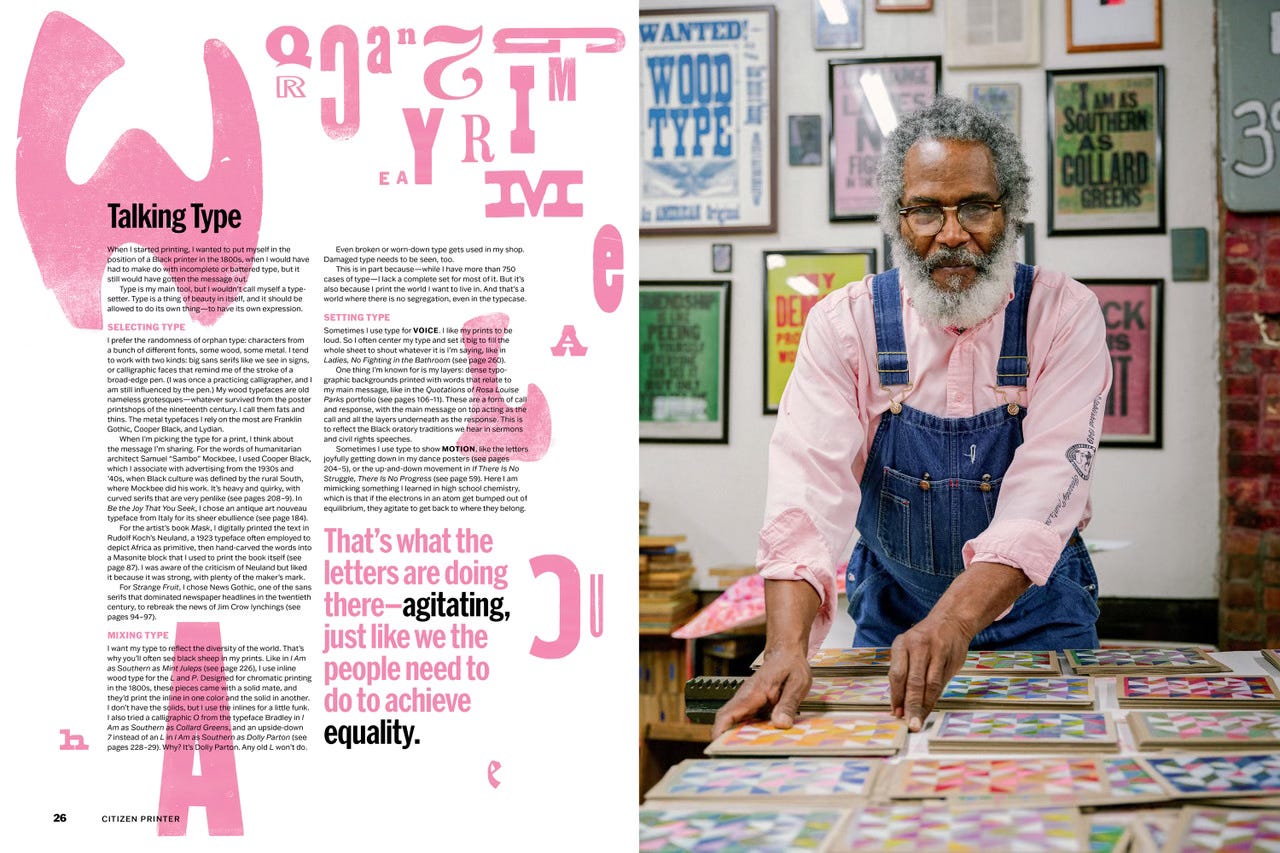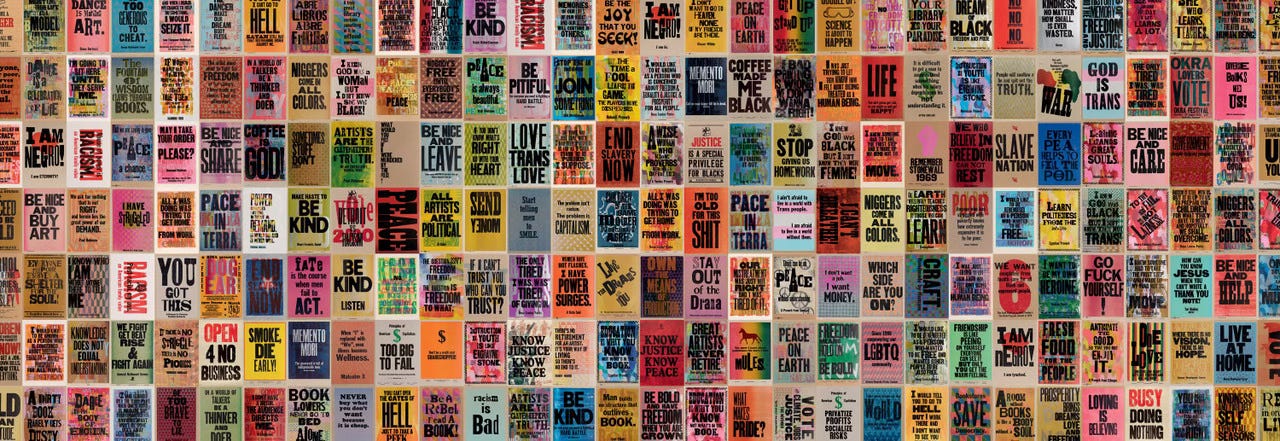Hey y’all,
Today is the release of Amos Paul Kennedy, Jr.’s monograph Citizen Printer. I had the pleasure of writing the foreword to the book, and the folks at Letterform Archive said it was okay if I shared it with you all. (I’ve edited it ever so slightly, and added a couple of links.)
I’m always grateful for the chance to articulate what it is I love about art and the people who make it. This was fun to write, and hopefully fun to read.
Amos Paul Kennedy, Jr. is a man who embodies so much of what I love and admire in people who make things.
The first thing that strikes me about Amos is his love of language. He is a man of letters! (I do not consider it an insignificant detail that he was once enrolled in a library science program.) His work is a collection of words. He gathers them from books, aphorisms, proverbs, the mouths of babes, his own mind, and wherever else one receives messages.
“I’m just borrowing things,” I’ve heard him say. “I’m putting things together that people left for me.”
Kennedy’s work is evidence of the head, the heart, and the hands together at play. His is a physical process, done by a human body in time and space with the real materials of ink and chipboard and wood and machinery, pressing them all together into something new. In this digital age, it’s inspiring to see someone using their digits. Among the many images in this book that bring me joy, my favorite might be the photograph of his ink-stained hands.
He’s a great imperfectionist, inviting the happy little accidents that make each of his works unique. Every print is “a little off,” he says, “because we’re all just a little off.”
A literature professor will praise a text for having many layers, but in Kennedy’s works you can actually see the layers with your eyes.
Kennedy locates himself within a tradition and digs into the past, but there is an irreverence and rowdiness in his work — an infectious, undeniable life force.
“All you have to do is declare yourself crazy,” he says. “And do what you want to do.”
He is a man who has been willing to walk away from comfort in order to devote himself to his calling. He has said:
“I don’t want more. I want less. I want to have less, so I will have more time to devote to this gift that I have. Because in the final analysis, the only thing that we have that is not renewable is our life. When I am dead, they will still make money. My time, I have decided, is more important. To claim my time to do what I want to do in that time.”
Maybe most important to me is his sense of humor. There’s a bad idea in our culture that comedy is not as serious as tragedy, but those in the know will tell you that comedy is humanity’s greatest survival mechanism. Laughter is a great means of resistance in the face of struggle, suffering, and death. As bell hooks told us, “We cannot have a meaningful revolution without humor.”
Kennedy will not call himself an artist, and I have not used that word so far out of respect for him, but he’s as much of an artist as anyone I’ve ever seen. I suspect he would love the Balinese saying often quoted by another printmaker hero of mine, Corita Kent: “We have no art. We do everything as well as we can.” (He might’ve already printed that one.)
Many times I’ve known the delight of opening an envelope postmarked Detroit with a Kennedy print inside. To hold a thing in my hands that he’s made with his hands makes me want to make things with my hands. I hope you will experience that same joy and inspiration when you turn the pages of this book.
To borrow words from the word borrower who borrowed them: Proceed and be bold!
You can buy the book and see more of Amos’s work on Instagram: @kennedyprints.
If you’re lucky enough to be in the Bay Area, you can see his exhibition at Letterform Archive until next January.
As always, I’d love to hear from y’all in the comments:
Keep reading with a 7-day free trial
Subscribe to Austin Kleon to keep reading this post and get 7 days of free access to the full post archives.








